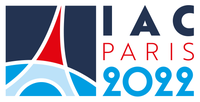›Interstellar Shocks - Models, Observations & Experiments
Shocks are ubiquitous in the interstellar medium, including protostars, evolved stars, supernovae blast waves as well as spiral arms. On small scales, shocks have a strong impact on the local physical conditions, the gas chemistry and they deeply affect dust grains, through sputtering of their ice mantle or their refractory cores, or even through shattering in the fastest shocks. On larger scales, shocks produced by spiral arms can induce colliding flows, triggering the formation of molecular clouds. The cumulative impact of shocks influence the evolution of molecular clouds by injecting supersonic turbulence, and in turn their star formation efficiency, hence play a major role in regulating the star formation rate of galaxies. Shocks are therefore relevant for many astrophysical and chemical processes and their detailed understanding, which needs a combination of observations, models and laboratory experiments, has a wide range of applications.
This meeting will cover all aspects of shocks in the interstellar medium: from microphysics to impact on galaxy scales. The program of the workshop reflects this broad range of topics related to interstellar shocks:
Observations of shocks and related chemistry in protostars, supernovae
remnants and evolved stars from UV to sub-mm
Models of shocks, with a special focus on the impact of UV irradiation,
the shock geometry, and the role of grains
Laboratory studies of shocks, jets and sputtering phenomenon
Shocks in stellar cluster and at molecular cloud scales
The objective of the meeting is to bring together astronomers with diverse observational, experimental, and theoretical backgrounds, to foster new collaborations, and to identify the major open questions relating to interstellar shocks.
Track this event on your Apple calendar














 Poland
Poland